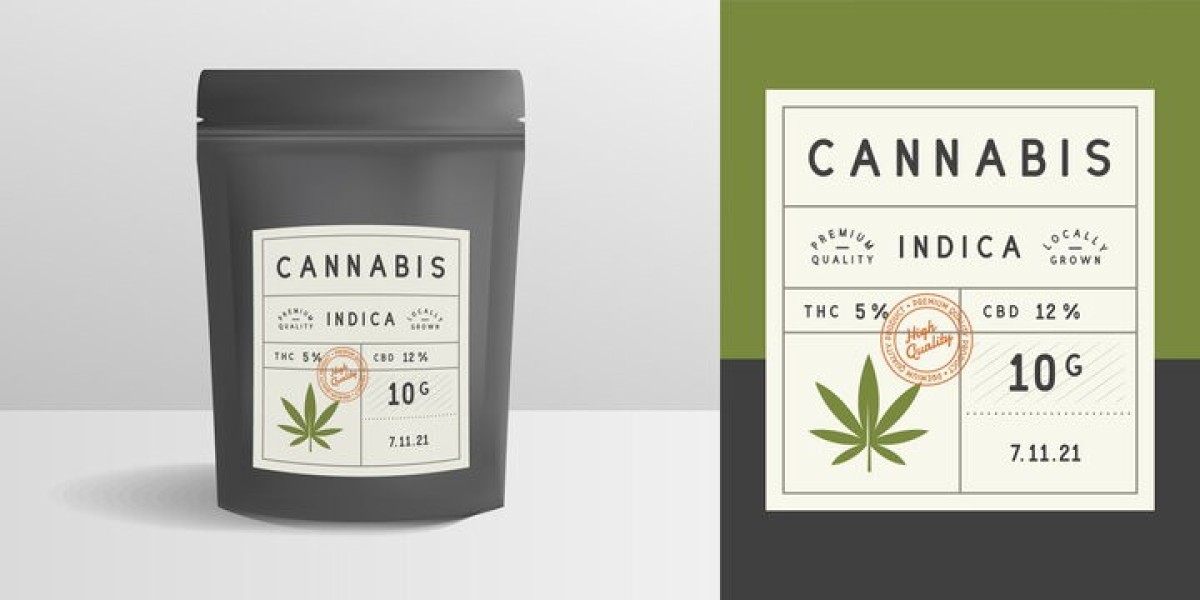Creating eye-catching weed packaging labels is essential for brands looking to stand out in the highly competitive cannabis market. A well-designed label not only attracts attention but also communicates your brand’s identity, builds customer trust, and ensures compliance with legal requirements. Below, we explore the critical steps and considerations for crafting cannabis packaging that leaves a lasting impression.
1. Understand Your Target Audience
Before diving into the design process, it is crucial to identify your target audience. Are you appealing to recreational users, medical cannabis patients, or a niche demographic such as health-conscious consumers? Knowing your audience will help you tailor the visual and textual elements of your weed packaging labels to resonate with their preferences and expectations.
Tips for Audience-Centric Design:
Research preferences: Explore color schemes, fonts, and imagery that appeal to your audience.
Cultural relevance: Incorporate design elements that align with the cultural or lifestyle values of your demographic.
Simplicity matters: Avoid clutter; a clean and professional design fosters trust.
2. Highlight Brand Identity
Your brand identity should be at the core of your packaging design. Consistency in colors, fonts, and logos ensures that your products are instantly recognizable on shelves.
Key Elements of Brand-Centric Labels:
Logo Placement: Ensure your logo is prominently displayed without overpowering the overall design.
Color Palette: Use colors that align with your brand’s personality (e.g., green for natural and organic, metallics for luxury).
Typography: Select fonts that balance readability with style.
3. Prioritize Compliance with Cannabis Regulations
Cannabis packaging is heavily regulated, with laws varying by region. Non-compliance can lead to penalties, product recalls, or damage to your brand’s reputation.
Compliance Essentials:
Mandatory information: Include THC/CBD content, warning labels, and usage instructions.
Childproof design: Use tamper-proof and child-resistant materials where required.
State-specific laws: Familiarize yourself with local packaging regulations to ensure adherence.
4. Use High-Quality Materials
The material of your packaging contributes to the overall perception of your product. Premium materials can signal quality and reliability to your customers.
Material Options:
Recyclable materials: Appeal to eco-conscious consumers by using sustainable options.
Durability: Ensure the material protects the product from moisture, light, and damage.
Finish: Matte, gloss, or soft-touch finishes can add a sophisticated touch. more
5. Incorporate Eye-Catching Visual Elements
Visually striking packaging grabs attention and encourages potential customers to pick up your product.
Design Elements to Focus On:
Imagery: Use graphics or patterns that evoke a sense of curiosity or elegance.
Contrasting colors: Combine colors that stand out while remaining harmonious.
Custom illustrations: Unique, hand-drawn designs can set your brand apart.
Embossing and foiling: Add a tactile and luxurious feel to your labels.
6. Optimize for Shelf Appeal
Your packaging should be designed with retail shelves in mind. A product that stands out among competitors has a better chance of capturing consumer interest.
Shelf-Friendly Tips:
Clear branding: Ensure your brand name and logo are easily visible from a distance.
Compact design: Avoid overly bulky or awkward packaging shapes.
Uniformity: Maintain a cohesive look across product lines to encourage brand recognition.
7. Incorporate Informative Content
Modern consumers appreciate transparency and information. Use your packaging to educate and inform potential buyers with custom product packaging.
Content Ideas:
Product benefits: Highlight key features such as organic cultivation or specific strain effects.
Usage tips: Include recommendations for storage or dosage.
QR codes: Provide scannable links to your website or lab test results for added credibility.
8. Ensure Functionality and Usability
Practicality is as important as aesthetics. Packaging that is easy to open, reseal, and store enhances the user experience.
Functional Features:
Resealable zippers: Help maintain product freshness.
Transparent windows: Allow customers to view the product without opening the package.
Compact sizing: Ensure portability for on-the-go users.
9. Leverage Technology for Modern Appeal
Integrating technological features into your packaging can elevate the customer experience and reinforce your brand’s innovative image.
Tech-Enhanced Ideas:
Augmented reality (AR): Let customers scan the packaging for interactive experiences.
NFC tags: Use Near Field Communication for instant access to product information.
Personalization: Offer customizable packaging options for special occasions.
10. Test and Gather Feedback
Before finalizing your packaging, test prototypes with a focus group or loyal customers. Their input can help you identify potential improvements.
Testing Checklist:
Visual appeal: Does the design grab attention?
Clarity: Are all required details easy to read?
Durability: Does the packaging withstand storage and transportation?
Usability: Is it user-friendly for your target audience?
Conclusion
Designing eye-catching weed packaging labels is both an art and a science. By understanding your audience, emphasizing brand identity, ensuring compliance, and incorporating innovative design elements, you can create packaging that captivates consumers and boosts sales. Invest in quality materials, usability, and feedback to refine your design for maximum impact.







